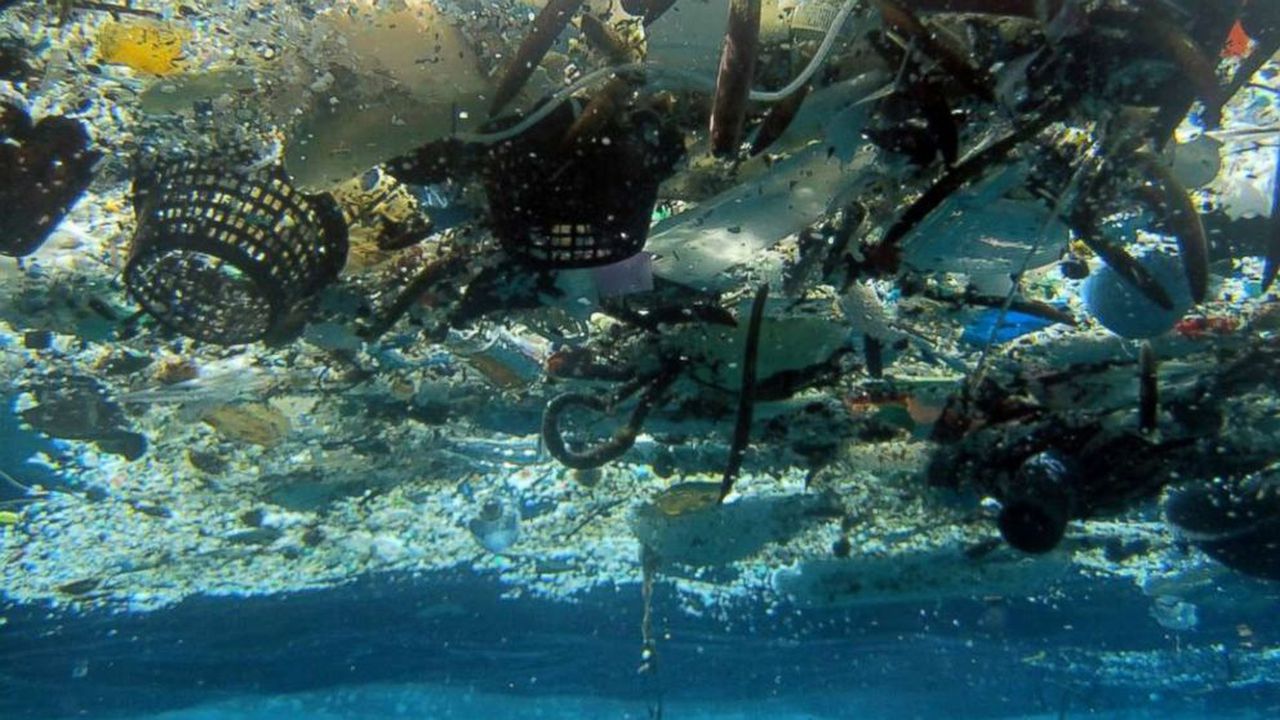This plastic patch twice the size of Texas is now a permanent home to coastal species
An enormous patch of plastic garbage floating far out in the vast blueness of the Pacific Ocean has become so big that it can now support permanent ecosystems of species that have traveled thousands of miles on trash, according to new research published earlier this week.
The study, presented in Nature Ecology & Evolution Journal, examined over 100 pieces of plastic plucked from the 620,000 square mile patch between Nov. 2018 and Jan. 2019. It found dozens of coastal invertebrate species had survived far out at sea and managed to reproduce over the years.
The study also highlighted the stark reality of increased ocean-going pollution that is creating new ecosystems for creatures that would otherwise not be able to survive in the open sea, like tiny crabs and anemones. The floating trash, known as the Great Pacific Garbage Patch, is approximately twice the size of Texas and is growing every year.
The patch stretches from the coastal waters of Japan to the waters closest to the southern coast of California and Mexico.
However, the patch doesn’t look like a giant island of trash, according to Matthias Egger, head of environmental and social affairs at The Ocean Cleanup, a non-profit that develops technologies to rid the oceans of plastic.
“You can think of it like the night sky,” he told CNN. If you look up at night, you see all those white dots; that’s essentially what you see in the garbage patch. It’s not that dense, but there are a lot of them … out there, you start seeing more and more plastic the longer you look.”
It’s estimated that there are 1.8 trillion pieces of plastic in the patch, weighing 80,000 tonnes, according to the report. The fishing industry contributed to most of the trash, but between 10% and 20% is believed to come from the 2011 tsunami that devastated the east coast of Japan.
There are 171 trillion pieces of plastic in the ocean, representing 95,000 pieces for every human on Earth. Each year, 460 million tons of plastic are produced, a figure that will triple by 2060, according to United Nations Environment Programme (UNEP). Over 99% of all plastics are derived from fossil fuels, such as petroleum oil.
UNEP notes that only 9% of plastic is recycled, while 22% is litter, eventually ending up in the ocean.
While lumber, glass, and metal are made of naturally occurring materials, “enduring plastic materials may survive much longer,” noted the report.
The origins of the researched plastic were not easily identifiable, but the study’s authors said that around 8% were from East Asia while under 4% were from North America.
